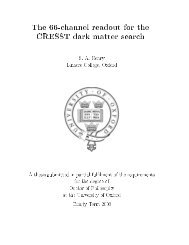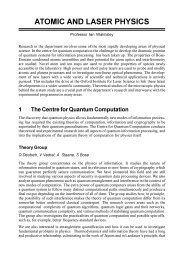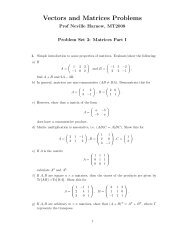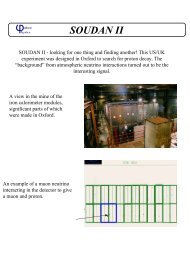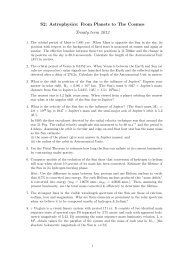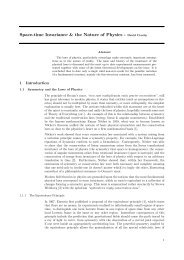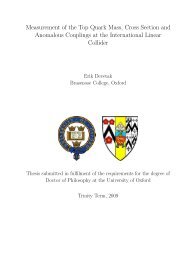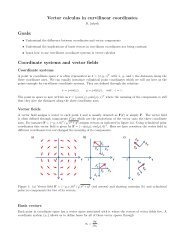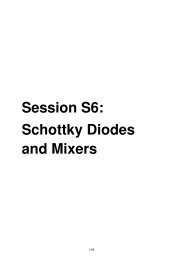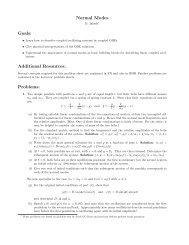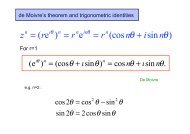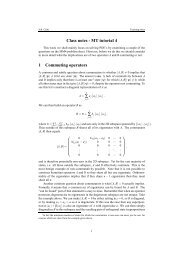You also want an ePaper? Increase the reach of your titles
YUMPU automatically turns print PDFs into web optimized ePapers that Google loves.
Macroscopic cross-sections for natural<br />
uranium (Σ t<br />
= Σn i<br />
σ ti<br />
)<br />
Factors affecting chain reaction<br />
1) For each thermal neutron absorbed, η effective fast neutrons emitted<br />
η < ν, mean number produced (ν =2.42 for 235 U), because not all<br />
neutrons absorbed by fuel cause fission. Nat U (0.72% 235 U) η =1.33<br />
2) Some fast neutrons cause fission before slowing down which<br />
increases the number <strong>of</strong> neutrons by the fast fission factor ε<br />
3) The probability that a neutron will avoid resonance capture by 238 U<br />
the resonance escape probability p - depends on the moderator<br />
4) The fraction <strong>of</strong> thermal neutrons that are absorbed by the fuel in the<br />
core (fuel, moderator, can) is called the thermal utilization factor f<br />
5) There are a fraction l f <strong>of</strong> fast neutrons and a fraction l t <strong>of</strong> thermal<br />
neutrons that leak out <strong>of</strong> the reactor<br />
The neutron multiplication factor k is therefore given by:<br />
k = ηεpf(1− l f ) (1− l t )<br />
For infinite core k ∞ = ηεpf<br />
Four factors formula<br />
Neutron Moderation<br />
Moderator is a medium for reducing the kinetic energy <strong>of</strong> neutrons from<br />
MeV to thermal level without losing many in the ‘resonant trap’ <strong>of</strong> 238 U<br />
m<br />
M<br />
For 180 deg scattering<br />
neutron<br />
E s = [(M − m)/(M + m)] 2 E i = [(A − 1)/(A + 1)] 2 E i<br />
For 0 deg scattering<br />
E s = E i<br />
Averaging, E s = ½{1 + [(A − 1)/(A + 1)] 2 }E s<br />
nucleus<br />
= [(A 2 + 1)/(A + 1) 2 ]E s<br />
(Averaging over all angles gives the same result)<br />
1<br />
H<br />
12<br />
C<br />
238<br />
U<br />
A 1 12 238<br />
E s /E i 0.5 0.86 0.99<br />
How many collisions required to reduce neutron energy from<br />
2 MeV to 1 eV ? (factor <strong>of</strong> 2 10 6 )<br />
Put (E s /E i ) n = 1/(2.10 6 ) = 5.10 −7<br />
eg 1 H gives n ~ 21, 12 C gives n ~ 96<br />
Moderating Ratio, MR<br />
Good moderators require<br />
• large σ elastic (σ el )<br />
• low σ capture (σ c )<br />
• significant loss in KE per collision<br />
• chemical stability (in hot, radioactive environment)<br />
Moderating ratio, MR = (1− E s /E i ) σ el /σ c<br />
Reactor Control<br />
H 2 O 62; D 2 O 4830; C 216<br />
If the neutron flux increases to a higher level than that needed for a<br />
stable chain reaction, how can the reactor be controlled, ie how can<br />
equilibrium be restored?




